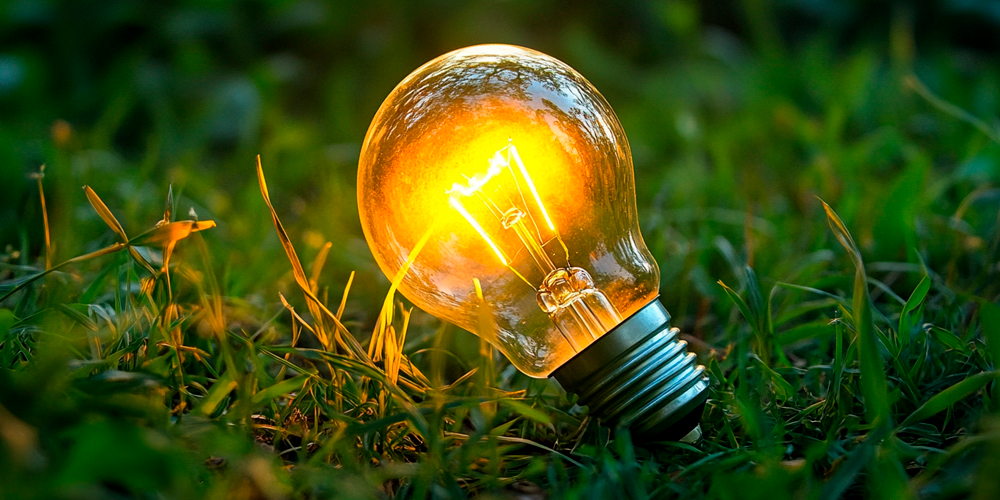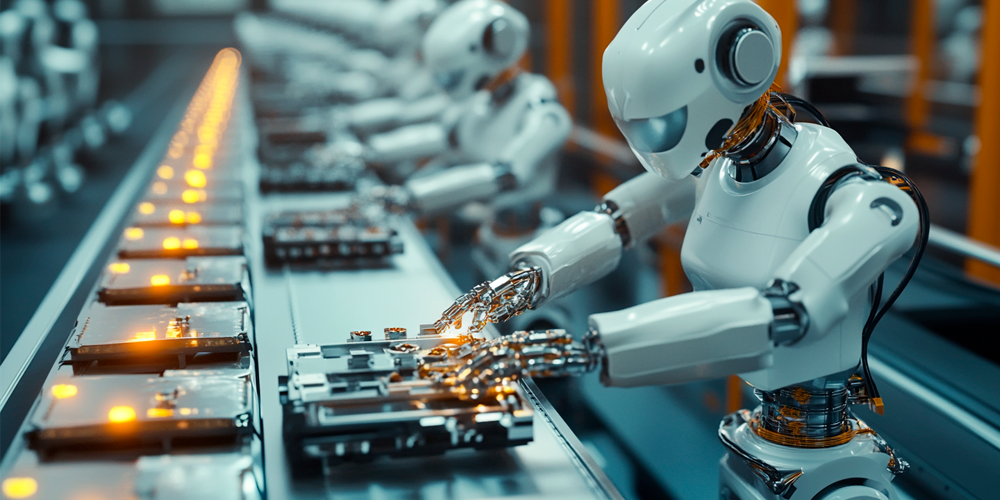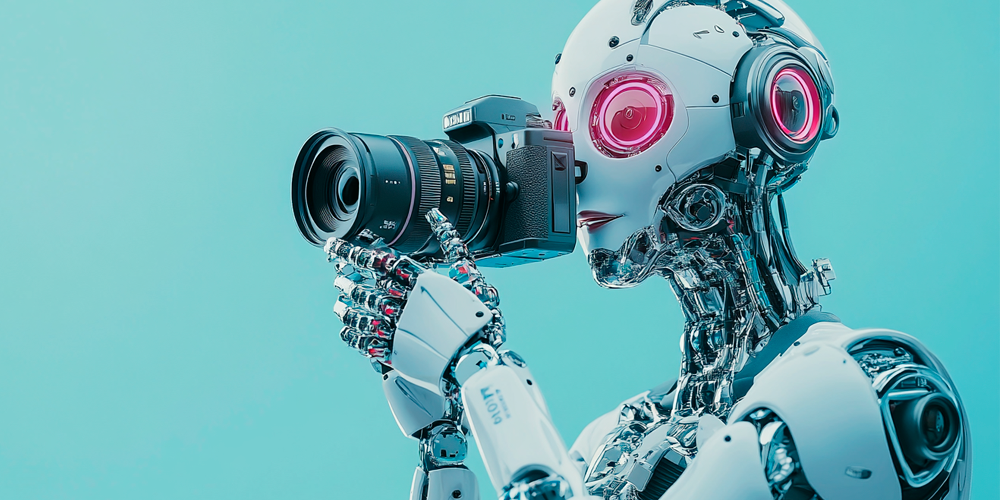From our initial (and bizarre!) experiments with DALL-E when the text-to-image AI software was first introduced in 2021, to the current speed with which we burn through our MidJourney hours, AI has now become thoroughly integrated into the daily workflows of most of Leap Group’s creative teams.
While headlines often focus on AI’s potential to replace human creativity, the reality in our agency offices tells a different story. As we’ve all discovered, AI serves as a powerful collaborator, augmenting our capabilities and streamlining workflows rather than replacing our own human creativity. It also helps us streamline routine tasks and enhance efficiency, giving us way more time for the free-association ideation and brainstorming we love.
In this blog, we’ll explore how those in various creative roles at Leap Group agencies—from designers to creative directors to video editors and more—are leveraging AI to enhance (rather than replace) their creative output and bring their visions to life while also increasing productivity and streamlining workflows. Read on to learn about our creatives’ favorite AI tools!

More Lightbulb Moments: Using AI for Creative Ideation
Many creatives are using AI to generate and explore initial concepts for anything from logos to campaign concepts and more, allowing them to explore a wider range of creative possibilities and push boundaries. They’re also using text-generating tools like ChatGPT to simulate brainstorming sessions and provide suggestions for copy, slogans, and taglines. However, Leap Group creatives emphasize that, while AI can generate starting points for ideas, emotional and intuitive decisions—critical in advertising—still require human oversight.
Greg Fehrenbach, President of (matter), says he uses Chat GPT and Claude AI to help with several brainstorming tasks, including naming, tagline and headline thought-starters as well as editing for tone of voice. And Madison Asher, Associate Creative Director at (human)x, reports that her team has been using MidJourney for creative concepting. “Sometimes I’ll even throw prompts in there just to see what it creates and see if it helps me think differently about something,” she says.
Never a Blank Page Again: Leveraging AI to Generate Content
Asher says that (human)x designers have also been using the popular image-generating software to create storyboards for commercials and images for mood boards. Indeed, art directors and designers across the network have been leveraging generative AI platforms like MidJourney and Adobe Firefly for rapid concept development, visual references, and mock-ups that would otherwise take hours to create. These tools assist with tasks such as creating quick mockups for client presentations, testing different layout variations, generating placeholder images that closely match the final vision, exploring color schemes and typography combinations, and more.
By using generative AI to rapidly prototype ideas and visualize different creative directions, creatives can explore diverse visual styles and tones quickly, test different messaging approaches before committing resources, and present clients with a broader range of initial concepts At the same time, the deep brand experience and storytelling expertise of Leap Group creatives remains crucial in curating, refining, and ensuring brand consistency across these AI-generated concepts. The key shift has been in the speed of iteration, freeing up art directors to focus on the strategic and aesthetic decisions that truly require human judgment.

Better and Faster: AI that Automates Design Tasks and Enhances Quality
Across the board, Leap Group creatives reported using AI tools for image creation and design automation more than for any other tasks, with time-savings and superior results cited as the top benefits of the tools. For example, (matter) Senior Designer Christina Koplyay says, “I use Photoshop’s AI features like Generative Fill more than I use any other program. It’s not quite as advanced as something like Midjourney, but it’s still a massive time-saving tool when I need to do things like extend an image, remove an object, or seamlessly continue a background—specifically when it comes to mockups for signage/environmental design pieces.”
Parker Hess, Designer at Leap Group, agrees: “I use Photoshop’s Generative Fill tool almost every day for social and blog posts,” he says. “It’s really nice for extending an image to fit a different aspect ratio. It does a great job at seamlessly creating something from nothing.” Meanwhile, Wes Keeton, Creative Director at Leap Group, relies on MidJourney and Firefly for image creation. “MidJourney produces the most sophisticated and realistic images,” he says, “but Firefly has more of the Adobe process and tools built in. I find I have a bit more control with Firefly because it’s an Adobe product and I know their other software well.”
Art directors are also using AI to not only generate images, but to enhance existing images. Koplyay and Hess mentioned Photoshop’s Generative Fill, but others are using AI tools to upscale low-resolution images and remove backgrounds with precision and speed. AI is also being used to generate consistent icon sets and create seamless patterns and textures. All these approaches help boost the production quality quickly and efficiently.
AI Tools That are Working Wonders for Web Designers
Not to be left out, web designers are rapidly adopting tools like Adobe Firefly and DALL-E to generate quick mockups, visual concepts, and design templates from text prompts, significantly reducing time spent on early-stage ideation. Meanwhile, platforms like Fronty convert visual designs directly into HTML/CSS code, allowing web developers to skip manual coding for website structures and focus on higher-level customization. Chris Harris, Designer at Leap Group, uses AI to create outlines for website designs, organize assets and information for each client, and then codify design systems with HTML and CSS. “ChatGPT can read images,” he explains, “so I’ll give it screenshots to show it what to fix and convert to code.” ChatGPT can also assist with writing documentation, project briefs, and client communications for website development, making collaborative processes smoother, while also ensuring faster delivery of high-quality products.

Looking into the Future with AI Tools for Video
The impact of AI on video editing has been particularly dramatic, particularly with helping improve speed and efficiency. AI-driven platforms such as Runway ML allow video editors to make instant adjustments, reducing the time spent on manual editing, while AI-powered project management tools enable seamless collaboration between creative teams and clients by automating feedback loops, versioning, and project updates. It can also help with technical tasks, such as automatic color correction and grading, background noise reduction, automatic subtitle generation, and scene detection and organization.
Perhaps more important is the creative enhancements AI video and editing tools can offer, from dynamic transitions and smart object removal to automated b-roll generation and content-aware fill for video. David Carrero, Director of Production and Animation at (spark) studio, loves Content-Aware Fill tool in Adobe After Effects: “It lets you mask out objects you want to remove and the AI will replace it,” he explains. “It’s really handy for logo removals, which otherwise would have to be done frame by frame in Photoshop.”
But that’s only one in a whole arsenal of AI-powered video tools that Carrero and his team are using. “We’ve also used Topaz Video AI, an AI upscaler, to turn low-res 720p content into 1080p and 4K resolutions,” he says. “Plus, Premiere Pro now has a built-in plug-in that analyzes audio and makes it sound more like it was shot in a studio. It’s really awesome. And looking into the future, Premiere just added a Video Extend feature where the AI can analyze a clip that ended and create more frames to keep it going. I’m really looking forward to playing with that one.”
Why Human Creativity Matters More Than Ever
As we’ve seen today, AI is not replacing creative professionals in advertising but instead empowering them to explore more possibilities than ever before by streamlining and automating their more routine tasks and freeing up more time for them to do what they do best. This transformation of creative workflows means that human creatives now have a whole new set of tools that can allow them to create richer, more varied, and more impactful creative work. Moving forward, human creativity and strategic thinking will be more important than ever before to create breakthrough work that truly resonates with audiences. And Leap Group creatives will continue to leverage all the latest tools to do one thing: make the creative that makes our clients’ brands matter more.